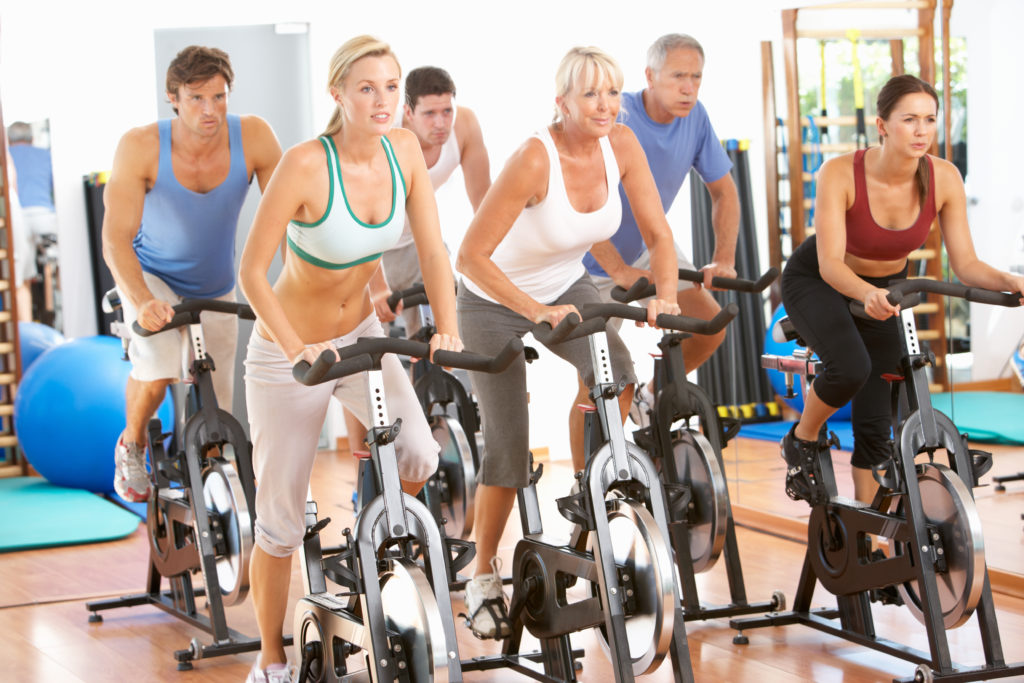Archive for February 2011
Feldenkrais® Lesson: Pelvic Tilt
The Feldenkrais Method of somatic education, created by Moshe Feldenkrais, offers a holistic approach to human development and motor function improvement through the medium of movement and sensation. It is based on the premise that through personal experience we develop habitual patterns of physical and psychological behavior—movement and thought—to ensure our personal, biological and social comfort. Over time these patterns become deeply embedded in our neurological systems and can become “blocks” to new ways of thinking, feeling and moving (Feldenkrais 1949).
Read MoreTraining Young Athletes: What You Need to Know
If you work with children and adolescents, you have probably fielded thousands of questions from parents regarding the safety and validity of organized physical training. As a fitness professional, it’s important that you provide parents of your child clients with accurate, up-to-date information based on extensive experience, research and professional correspondence. Here are two questions you are likely to get from parents and some factual, practical answers that you can easily communicate to them. The end result: you will help to engender and foster a lifetime of fitness, wellness and successful performance for your young clients.
Read MoreSample Class: High-Intensity Circuits
High-intensity, short-duration circuit training is a type of metabolic training that breaks the mold of traditional group exercise. You can use this circuit format with recreational exercisers—to jumpstart their routines—or intensify it to challenge your fittest participants and athletes with great success. Circuits consist of three to five compound exercises that challenge major upper- or lower-body muscle groups, as well as some type of cardiovascular interval for a complete workout. Structure the circuits using time or repetitions, and perform the exercises at an intensity level that creates a very high level of fatigue by the end of the circuit. Rest is self-selected.
Read MoreHow Much Are Fitness Professionals Paid?
Since the IDEA Fitness Industry Compensation Trends Report survey was last published in January 2009, the national unemployment rate has increased from 6.1% (August 2008) to 9.0% (January 2011), which equates to about 13.9 million unemployed individuals in the United States (U.S. Department of Labor 2010a). Last summer the rate stood at 9.6%. However, the silver lining for fitness professionals is that even though the national job market has declined, our industry is still expected to see better-than-average growth (29%) in positions over the next decade (2008–2018) (U.S. Department of Labor 2010b).
Read MoreTherapeutic Yoga for Seniors
Almost 20% of America’s nearly 16 million yoga practitioners are over age 55 (Yoga Journal 2008), which presents both an extraordinary opportunity and a serious challenge for yoga instructors. While some older adults are extremely healthy and fit—able to do headstands and other difficult postures—more common are those who fit the profile of an “average”…
Read MoreFree Radicals and Antioxidants
As an unexpected consequence of the metabolic steps that convert food into energy, the body produces molecules commonly called “free radicals.” When not produced in too much abundance, free radicals are harmless to the body’s life process and in fact are known to be helpful. However, when cells overproduce free radicals, they can become dangerous…
Read MoreTo Salt or Not to Salt?
Salt’s reputation for being the spice of life may be coming to an end. These days, salt is a four-letter word, and anyone wielding a shaker at the dinner table is likely to be met with condescending looks or comments from people convinced that salting is as toxic as smoking. Widespread media coverage on the…
Read MorePlanet Fitness® Eliminates Personal Training
According to the 2010 IDEA Fitness Programs & Equipment Trends report, personal training is continuing to show significant strength and growth potential as a profit center. Despite the promising data, however, the franchise company Planet Fitness has decided to eliminate personal training from its facilities. “The decision to end personal training has been long and arduous,” wrote Planet Fitness CEO Mike Grondahl in a letter to franchisees late last year. “It goes right to the essence of our business model.
Read MoreLeverage Daily-Deal Sites for Business Success
“Daily deal” organizations like Groupon and LivingSocial have increased in popularity over the past few years. These organizations work with local businesses to offer products and services at significant discounts. The catch? The deal must be purchased on the day it is presented or it is lost forever. “What daily deal sites like CrowdSavings offer merchants is performance-based marketing,” says Lisa Bellotti, marketing manager for Tampa, Florida–based LivingSocial.
Read MoreIs There a Best Way to Build Muscle?
It seems that each day a new study is published on best practices for building muscle. Many experts tout lifting resistance that is heavy enough to allow only 8–12 repetitions. Some experts believe a 3- to 5-rep strength-power protocol is best. Others argue for a much higher number of repetitions and less resistance. The endless…
Read MoreTrekDesk Receives Honors
Each year, the oldest continuously published magazine in the United States, Scientific American, unveils its annual Gadget Guide. Among the less-known gadgets on the 2010 list was the TrekDesk Treadmill Desk. The TrekDesk, which can be affixed to any treadmill, is designed to help eradicate the effects of inactivity due to seated desk work. “Scientific American has been reporting on medical and technological innovations since 1845,” stated TrekDesk CEO Steve Bordley.
Read MoreFalcons Set Guinness Record
In the January 2011 issue of IDEA Fitness Journal, it was reported that the Washington Redskins football team set a record for the largest virtual exercise lesson for kids. That record was recently shattered by the Atlanta Falcons, who hosted a morning exercise class for 2,288 children at the Georgia Dome. According to the Falcons’ website, the event was also streamed live on the Internet so children throughout the state could participate in the half-hour workout.
Read MoreGot Bad Feet? It May Be Genetic
Many people believe that musculoskeletal dysfunction is an inherited trait, and a recent research report on foot disorders seems to support that claim. The study, presented at the 2010 American College of Rheumatology Annual Scientific Meeting, suggests that “bad feet” may be genetic. To reach this conclusion, the researchers analyzed information gathered from the Framingham Foot Study, which included 2,179 participants with common foot disorders. The mean age of subjects was 66.
Read MoreKidney Disease Patients: Build Muscle, Live Longer
Kidney disease patients looking to improve quality of life and longevity should pick up a set of dumbbells, suggests a recent study. The authors of the study, published in the December issue of the Clinical Journal of the American Society of Nephrology (2010; 5 [12], 2258–68), measured mid-arm muscle circumference in 792 dialysis patients. During the study period the patients with the highest mid-arm circumference were 37% less likely to die than those with the lowest circumference.
Read MoreMilitary-Aged Americans Not Fit to Fight
Over the years, the U.S. military has developed fitness standards to promote the safety and effectiveness of its personnel. Unfortunately, fewer people are meeting those standards today. According to the National Bureau of Economic Research (2010; NBER Working Paper No.
Read MoreStrength Training Benefits Kids, Says Study
It has been recognized that resistance training can be an important component of adolescent fitness. But does age play a role in muscular adaptation? According to a study published in Pediatrics (2010; 126 [5], e1199–e1210), the answer is “yes.” Researchers from the German Sport University Cologne combed through 42 previously published studies of more than 1,700 children and teenagers. The subjects in the studies had been assigned to perform strength training using free weights or machines.
Read MoreGender Differences in Sweat Production
The body’s ability to sweat is a necessary physiological function that regulates body temperature. But a study published recently in Experimental Physiology (2010; 95 [10], 1026–32) found that while men tend to have a highly efficient sweat response, women do not. The researchers, from the Laboratory for Human Performance Research at Osaka International University in Japan, separated 37 people into four groups: trained females, untrained females, trained males and untrained males.
Read More






